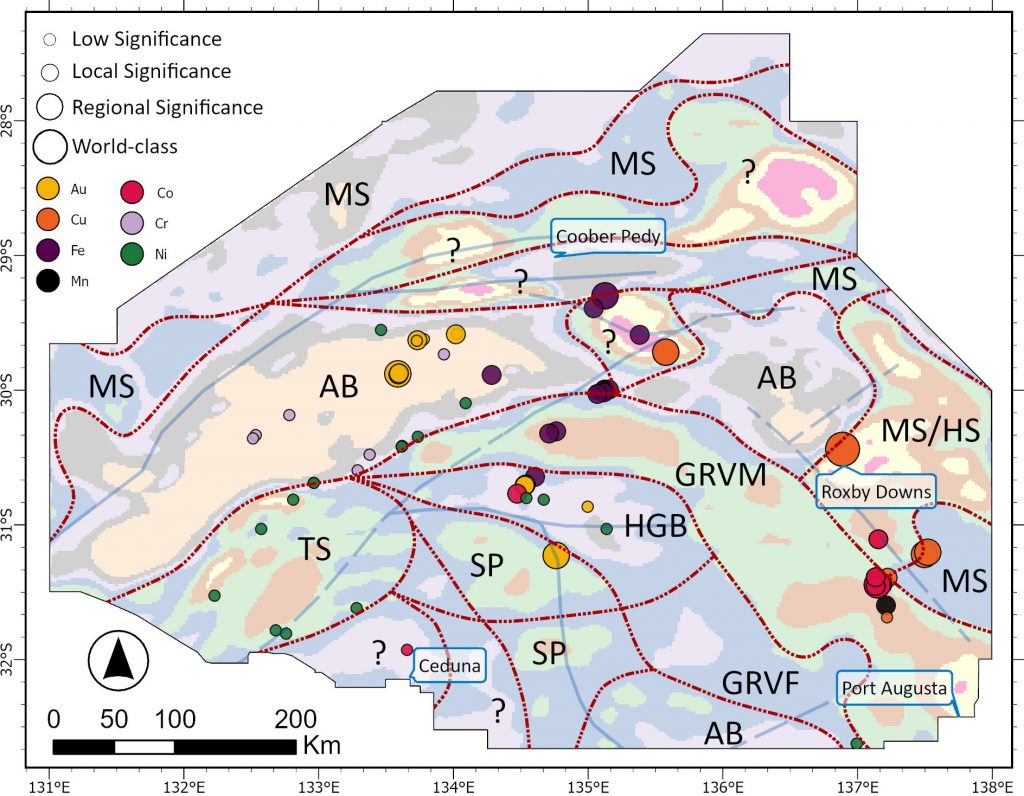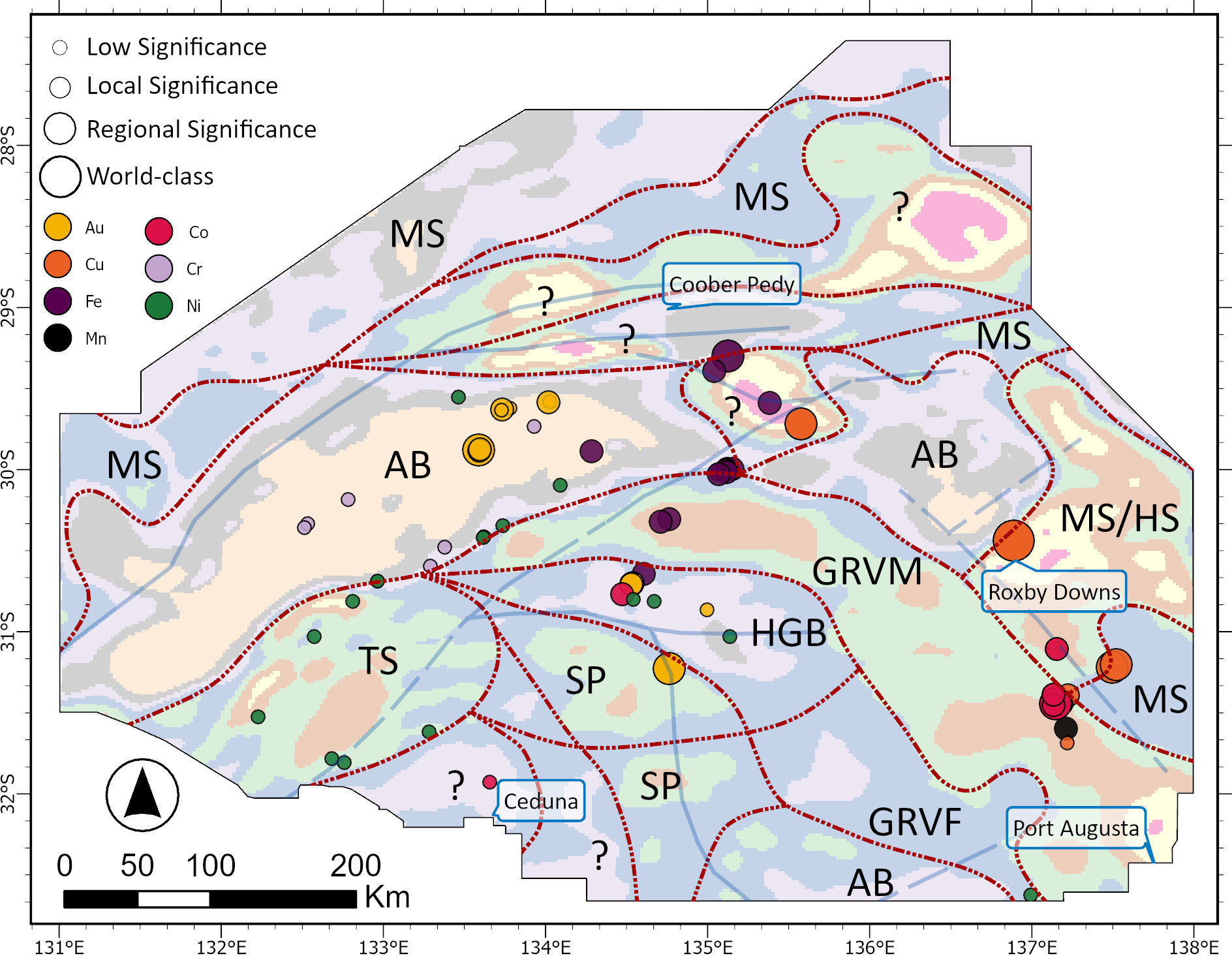Internal structures and discontinuities within cratons are economically significant due to their history of tectonic reactivation from varying intraplate stress fields, which open pathways for fluid flow and facilitate mineral deposition. However, the complex overprinting tectonic processes that make cratons prospective can also lead to uncertainty regarding their internal geometries. To address this, we take a fresh perspective on these systems by using a data-driven approach to better delineate their structures and mineral potential, focusing on the Gawler craton in South Australia. We generate over 400 magnetic and gravity anomaly features and use them as input for clustering algorithms to map clusters that represent crustal structures. We compare the efficiency of two clustering methods—self-organizing map and K-means—in outlining internal craton structures at shallow (<5 km) and deep (5–30 km) crustal depths. The results are evaluated using three performance metrics alongside geologic maps. We focus on all metallic mineral systems, including mafic-ultramafic intrusions, for Co, Cr, and Ni and intrusion-related and sediment-hosted systems for Au, Cu, Fe, and Mn. Our findings indicate that most metallic mineral occurrences, particularly significant deposits, form along the boundaries of these clusters. Approximately 80% of mineral occurrences are within 7 km of deep craton structures, and almost all follow shallow and deep structures occupying less than one-third of the study area. Our approach can be easily applied to any craton at any scale and supplemented with other geophysical data, such as magnetotelluric and regional seismic tomography data, to generate more comprehensive and reliable results.

![]()

